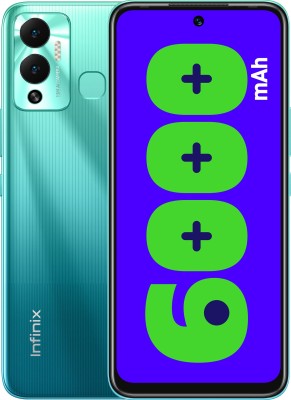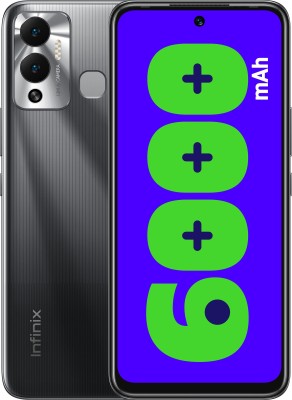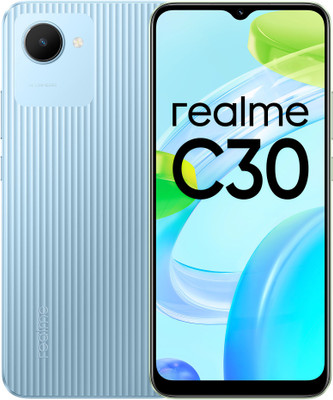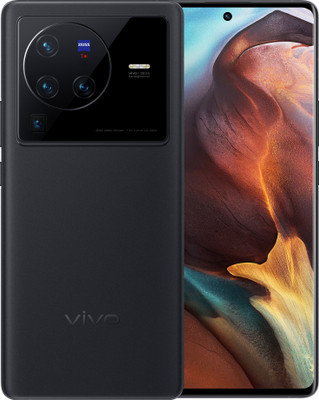Samsung 870 QVO 8TB SATA 6.35 cm (2.5″) Internal Solid State Drive (SSD) (MZ-77Q8T0BW)
- All prices mentioned above are in Indian Rupee.
- This product is available at Amazon.in.
- At amazon.in you can purchase Samsung 870 QVO 8TB SATA 6.35 cm (2.5") Internal Solid State Drive (SSD) (MZ-77Q8T0BW) for only Rs. 61,999
- The lowest price of Samsung 870 QVO 8TB SATA 6.35 cm (2.5") Internal Solid State Drive (SSD) (MZ-77Q8T0BW) was obtained on January 15, 2025 3:19 pm.

Original price was: ₹143,119.₹61,999Current price is: ₹61,999.
Samsung 870 QVO 8TB SATA 6.35 cm (2.5″) Internal Solid State Drive (SSD) (MZ-77Q8T0BW) Prices
Price History
| Price history for Samsung 870 QVO 8TB SATA 6.35 cm (2.5") Internal Solid State Drive (SSD) (MZ-77Q8T0BW) | |
|---|---|
|
Latest updates:
|
|
Description
Additional information
Specification: Samsung 870 QVO 8TB SATA 6.35 cm (2.5″) Internal Solid State Drive (SSD) (MZ-77Q8T0BW)
|







 Amazon.in
Amazon.in







Dave McGrath –
Great for my 100K+ RAW photos and Lightroom use. Blackmagic speed test 430MB/s write, 385MB/s read using the Unitek USB-C to DATA III hard drive adapter and a MacBook Pro 2021.
Kindle Customer –
Awesome product; estimated 170 years+ of usage. This is the last drive you’ll need. Know what you’re going to use it for though before you begin file transfer. It’s NOT a typical drive. It IS a little… temper-mental.
Hamptonman –
I needed a big 8 TB drive for an Aurender Music Streamer. Wasn’t many options in the 8 TB arena, but I already owned a 4TB version of this drive which pretty much got filled up with my music files. Never had any problems with the 4 TB so I decided to get this 8 TB version. I anxiously awaited it’s delivery and 4 days later it was here. I carefully unboxed it and prepped my machine for the swap. Once installed the machine reported 7.5 TB! Then the machine prompted me to format the drive which I did and within minutes it was ready to go. I checked the available space and found 7.1 TB useable storage. It works seamlessly with the Aurender, no issues at all. The 8 TB drive I thought I bought, formatted to 7.1 TB! I realize in all drives you don’t get the stated amount of storage, but to loose almost 1 TB of storage is crazy! I love the product, but it’s really disappointing to find you spend $800+ on a drive and find out the 8TB drive I purchased is really a 7.5 TB drive!
Grabenstein –
En ces temps incertains où “on” nous dit que l’inflation va ratatiner notre pouvoir d’achat et déglinguer notre épargne, tout ça suite à des décisions et positions plus que discutables, j’ai franchi le seuil de l’achat de ce petit disque SSD, micro en taille mais maousse en prix (637E dès lors qu’on opte pour la capacité 8TB).
Installé comme décrit ci-après dans mon environnement Windows7 PRO, mû par une carte mère Gigabyte B85M-D3H et un processeur Intel de moyenne gamme (G3220@3.00GHz) avec 8Go de RAM, il a tout de suite été reconnu par le BIOS.
Connecté sur le 2ème port SATA2 de la B85M, donc en 2ème disque du Western Digital (WD60EZRX 6TB AVEC 60 Mo de cache) de travail habituel, connecté lui sur le 1er port SATA), le clonage s’est déroulé sans aucun incident avec mon logiciel habituel (CASPER Secure Drive Backup V4.2).
Pour ceux qui ne sont pas familiers avec ces manipulations de clonage, il faut juste savoir que lorsqu’un clonage est réussi (ce qui n’est pas toujours le cas même si aucune erreur n’a été remontée), le disque cible doit présenter très exactement les mêmes fonctionnalités que le disque source.
Si celui ci “démarrait” correctement, alors son clone doit le faire aussi.
Avant de lancer un clonage, il convient cependant de vérifier que le disque source est “sain”, car une source déstructurée, même si elle arrive à fonctionner, donnera un clone instable.
Pour précision, je n’aime pas les installation avec un disque physique partitionné en plusieurs unités logiques si ce n’est pas strictement nécessaire, donc sur mon système ce n’est pas le cas, et il y a juste une unité C: (hors installation d’un 2ème disque physique opérationnel).
Les quelques 5,5TB qui composent le disque primaire ont été copiés en un peu moins de 12h, ce qui est quasi deux fois plus rapide qu’un même clonage sur un deuxième disque standard (électromécanique).
Le clonage terminé et le SSD étant mis sur le 1er port SATA en lieu et place du disque système habituel, il s’est passé un truc bizarre, car il n’était pas reconnu (erreur BIOS “pas de disque installé”) malgré plusieurs redémarrages.
En remettant le SSD sur le deuxième port, il a été reconnu illico et le système a démarré normalement (mais bien plus vite que mon “vieux” disque système).
Comme on peut s’y attendre, la place effectivement disponible après formatage (ou installation par clonage) n’est pas de 8TB comme marqué dans la brochure, mais de 7,2 ce qui est le ratio habituel.
Après diverses vérifs et tests d’intégrité qui se sont déroulés sans accroc, j’ai remis le SSD sur le 1er port SATA, et là tout s’est bien passé (et ça a l’air de perdurer), laissant supposer un faux contact transitoire dans le câble ou un des deux connecteurs…
A classer dans la série des mystères informatiques inexpliqués.
Côté performances, je parlerai plutôt en termes de ressenti.
Comme ça, sur les diverses actions habituelles de mise en marche, de chargement de logiciels et de manipulations de fichiers moyens, ça va vraiment beaucoup plus vite. Piffométriquement, je dirai 3 à 4 fois, ce qui n’est pas rien et suffit à rendre de la jeunesse à une configuration quelque peu arthritique.
Au niveau mesure de durée sur des copies inter-répertoires de fichiers vidéo d’environ 1GB, c’est moins spectaculaire, et là on descend à 42,7% de gain (59 secondes pour ce SSD contre 103 sur le WD), mais ça reste acceptable pour qui ne travaille pas avec des fichiers gargantuesques.
Niveau démarrage W7 complet (depuis ordi éteint physiquement jusqu’au rafraîchissement des icônes) sur le SSD ça prend 24 secondes contre 87 sur le WD (soit un gain de 362% ou 3,62 fois plus vite).
En conclusion, pas de gros souci technique à signaler de prime abord (on verra sur le plus long terme), et un confort d’utilisation sérieusement amélioré, ce qui de mon point de vue justifie l’investissement.
G.
PS : Bonjour à Ecce, Shuffle, et à tous les copains de la bonne époque où on pouvait sous-commenter… Si l’un d’entre vous souhaite reprendre contact : super-matou a t laposte point net
.
Anton –
Habe mir die Samsung 870 QVO mit 8TB als Ersatz für meine 8TB HDD gekauft.
Mit QLC-Speicher ist sie zwar nicht die schnellste,reizt aber die SATA-3 Bandbreite nahezu aus.
So ist sie aber mindestens doppelt so schnell wie die HDD, die diese SSD jetzt ersetzt und genau das reicht mir.
Vor allem, wenn viele kleine Dateien geladen werden müssen, spielt die Samsung QVO ihre Stärken aus, während die HDD munter vor sich her rattert.
Wer sich diese QLC Platte kauft, weiß normaler Weise worauf er sich einlässt.
Wer hier enttäuscht ist, wegen der geringen Performance, hat sich entweder nicht schlau gemacht oder aber diese SSD für einen nicht für Sie geschaffenen Einsatzbereich gekauft.
Sie ist abseits von Office, definitiv keine Systemplatte.
Da, wie im Titel geschrieben, die SSD als Spielebibliothek dient, hält sich die Schreiblast in Grenzen.
Es wird also überwiegend gelesen.
Somit gehe ich davon aus, daß die Samsung 870 QVO ein langes Leben hat.
Da vertraue ich auch auf Samsung und deren Knowhow in der Speicherfertigung.
Ja und ein paar Flachkopfschrauben zum befestigen am Rahmen, hätten ruhig dabei sein können.
Von mir eine klare Kaufempfehlung
Chalukya J. –
I’m using the 8TB variant with my Xbox Series X with a UGreen external hdd case and I’ve got to tell you, it is mind blowing… I got it with discount for around 65K INR, so you can wait until the price drops and get this…
First of all, people complaining about non sustained peak speeds, it’s obvious, it’s a QLC ssd (quad level cell) which are hella cheap but comes with lower speeds (due to the same cell now storing 16 possible values, 4bit value) and durability issues, which translates to, it has a lower no of write cycles before the ssd fails… Then why did I go for it, well, simply because my use case is for using it as a dump to keep all my XSX games on and that means I don’t constantly delete old games whenever I buy a new one (owing to it’s sheer size of 8tb)
That means I’m not going to be cycling the written portions of the ssd that often, and more often than not I’ll be using to run games of off which is read only and hence for my use case it’s perfect balance price and performance.
And regarding the lower speeds, samsung has done a good optimization where in a sizeable part of the ssd acts as an slc (single level cell) cache, around 40 – 50 GB, which means if your writes are within that limit then you’ll get the blazing fast speeds of 2.8Gbps ~ 350MBps after which it’ll drop down to ~1.1 Gbps ~ 140MBps. Also keep in mind give the ssd some time after this as it’ll rearrange the psuedo slc data to qlc cells more efficiently and get you back your space
So it’s not your ssd which is performing bad, it’s just a limitation of qlc flashes, that need to store 16 different values in each cell which takes time and hence are slow, but it’s cheap for that exact reason.
So, in conclusion, this is a great ssd with sufficient write and read speeds (reads are constantly done at 2.8+ Gbps as there’s no limit to that) and good enough longevity if you understand the ssd technologies and their limitations. Please consider your use case, if it’s going to dump a bunch of content (games, movies, installers) on the ssd and mostly just read them all the time then this is the ssd for you, but if you want to write large amounts of data on a daily basis with frequently clearing out old ones to make space for new writeable content, then this is going to last you less and you may even run into data loss due to corruption.